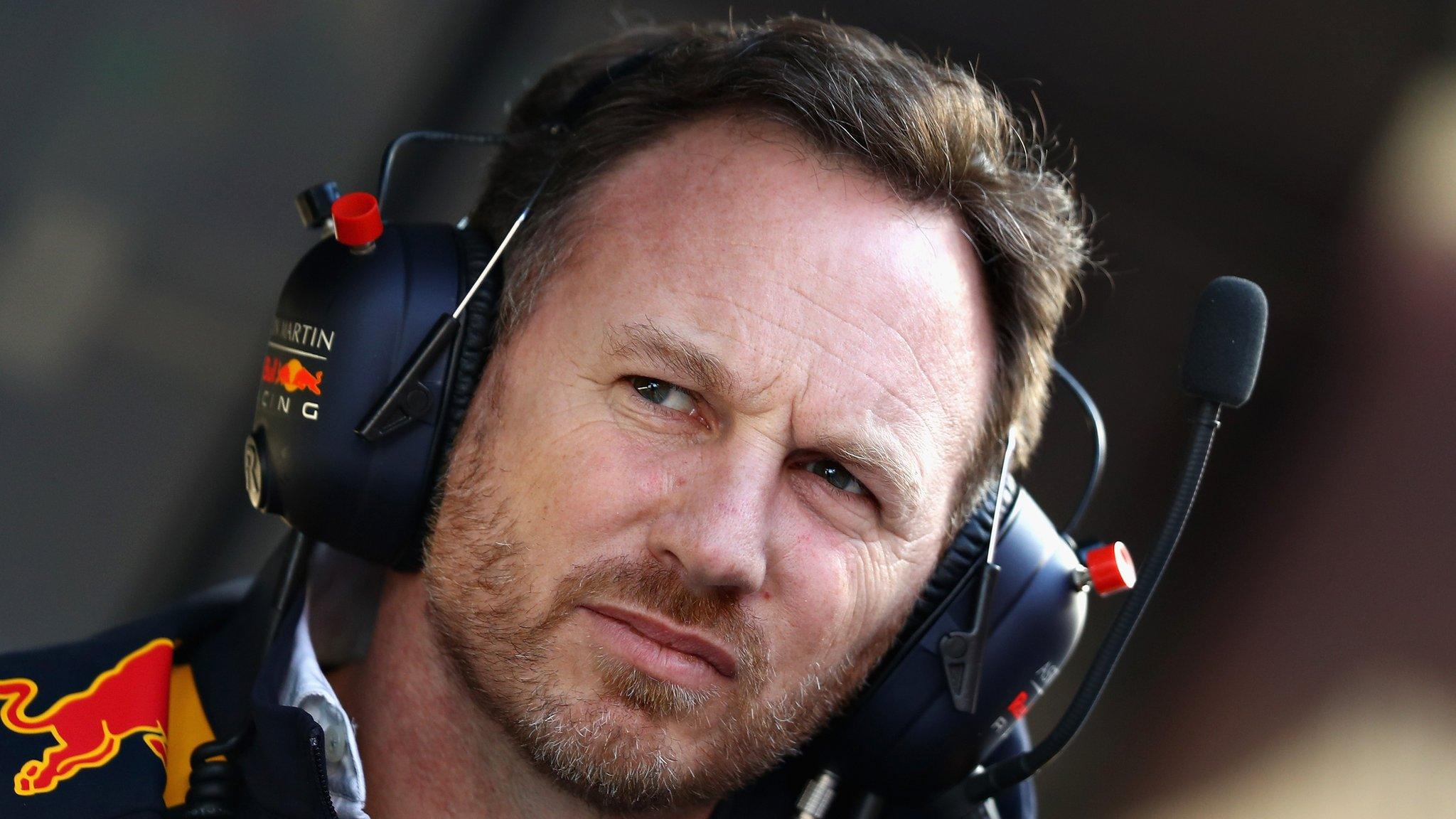Australian GP: 'After grafting in a cold gym, Australia is such a buzz'
- Published
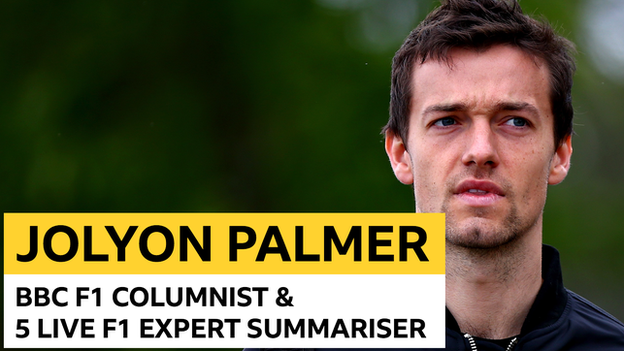
F1 driver Jolyon Palmer, who left Renault at the end of 2017, joins the BBC team this season to offer insight and analysis from the point of view of the competitors.
Almost everyone in Formula 1 is a racer. Not just the drivers, but everyone, from the team bosses, through the mechanics and engineers, even the media. That's why the start of the season in Australia is such a buzz.
Even if they aren't driving the car, everyone likes the thought of the engines starting up and the thrill of competition beginning again.
F1 has a long, intense season that takes a lot out of you. But last November feels a long time ago.
The drivers have been hard at work training, ensuring they are in peak condition for the new season. And nearly everyone has been through a European winter.

The first race of the season takes place in Melbourne's beautiful Albert Park
After three months of waking up early, long hours in the cold and dark in the factory, just the thought of heading down to the warmth and convivial atmosphere in Melbourne at the end of the Australian summer is enough to put a smile on your face.
In January, drivers put in a huge amount of hard graft that will be the basis for their fitness level for the season - from my experience, that was in the gym in a rainy London. January is a long, boring month, so the thought of Melbourne in March is a great motivation.
On those grim January days, I used to be motivated by the thought of being out in sunny Australia, in my best shape to get a result, and ready to give it everything.
What's been happening since testing finished?
The teams finished their pre-season testing in Spain a couple of weeks ago. Since then, they and the drivers have spent the last two weeks in a state of nervous, excited anticipation.
Since packing up in Spain, everything has been manic with preparation and expectation in equal measure. This is the moment everyone has been waiting for.
At the teams' factories, all employees will have been working flat out. The mechanics have their busiest time of the year, assembling a second car and making more last-minute go-faster performance parts to boost the team's chances.
The engineers are crunching numbers, analysing what happened in testing, trying to figure out where they stand compared with their rivals, and figuring out the best way to start the weekend in Australia.
From a driver's point of view, you are doing the last preparations before heading to the race.
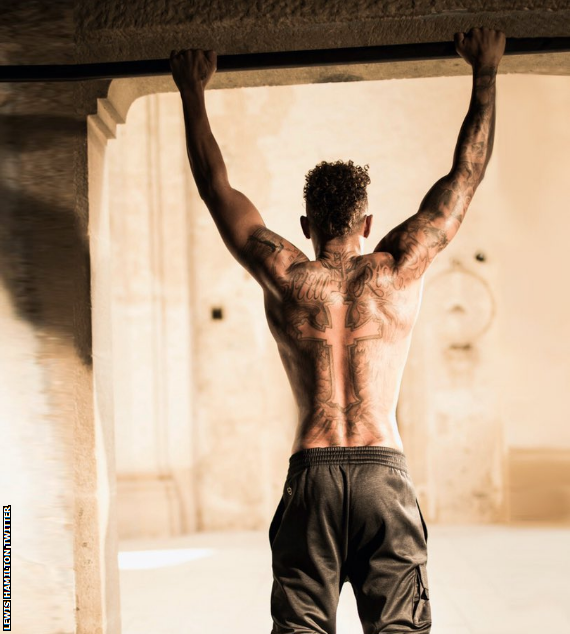
Four-time world champion Lewis Hamilton's gym doesn't look particularly cold - or gym-like
The winter will have been hectic with preparation - so much time in the gym, in the factory with the engineers, on the simulator. There is time for a final few debriefs and conclusions from testing, and then just pure anticipation.
Of course testing is only testing. It's difficult to know the exact order after it, even if the teams and the media try their hardest to delve into all of the numbers and make sense of it all.
The reality is that probably every team has a variety of performance upgrades arriving for the first race, so that order immediately gets a shake up. On top of this, Melbourne as a circuit is a world apart from Barcelona.
The Circuit de Catalunya is full of long, fast corners and not many straights. Albert Park requires lower downforce, and has longer straights and slow, bumpy corners and chicanes. It has a real street-circuit feel and is unique on the calendar.
Getting to Australia
Heading to Melbourne, there are practicalities to consider.
For a start, it's the longest flight of the year. F1 is based in Europe, and so are nearly all the drivers. Even Daniel Ricciardo, who will be heading to Melbourne for his home Grand Prix, is based in Monaco.
It's a good 24-hour trip and there is a lot of jet lag for everyone to deal with. But the travel is one of my favourite perks of F1, and the great thing about the so-called fly-away races (as those outside Europe are known) is that you travel out early to combat the jet lag and acclimatise to the weather, so you actually get to have a look around the cities before the race.
Dear F1: Please, please, PLEASE be more unpredictable
Most of the drivers will arrive at a similar time for the Australian Grand Prix, landing in Melbourne on either the Monday or Tuesday morning.
After getting off the plane and collecting your bags, you are greeted by a load of passionate Aussie fans waiting at the airport to see a group of sleepy, travel-drained F1 drivers.
This really sets the tone for the drivers, though. Melbourne has one of my favourite atmospheres of any Grand Prix. There is a perfect mix of passionate fans, knowledgeable enough to know their stuff but not offensive or too in-your-face everywhere you go.
The weather is usually good. Although it has been known to be awful at times for F1 in Melbourne, it is the end of Australian summer, and everyone is in summer mood.
The sun's out and, after months of cold and darkness in Europe - especially the UK, where I've always been based - getting some proper heat makes for a nice change!
Finally, of course, there is the main reason for the excitement, the race itself.
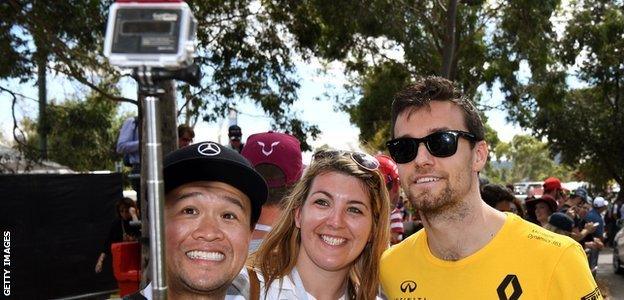
The Aussie fans soak up the good weather and driver selfie opportunities
What do drivers do when they get there?
The drivers will have a day or two off to acclimatise. This is a nice time. You can distract yourself from what's to come a bit and have a look around and get a chance to do touristy stuff.
You're probably hoping for some tales of jet-set living, but the reality is much more mundane than you would think.
I liked to go down to the beach and relax, kick a round a football with my trainer. You'd find plenty of young Aussies playing sport, and usually see a few other F1 folk there as well. It's a nice atmosphere to get outside and do a bit of training.
I would also check out the local markets and city. They do the best coffee in the world in Melbourne, and there are lots of quirky, independent coffee shops scattered around every other street.
Pretty much everyone in F1 lives and survives on coffee. The days are long for everyone and relaxing and having a coffee was something of a culture I got into through my time in F1.
It's just a nice vibe to be at the seaside and in the sun. St Kilda beach is a five-minute drive from Albert Park circuit and has a load of bars and restaurants on the seafront where drivers sometimes hang out.
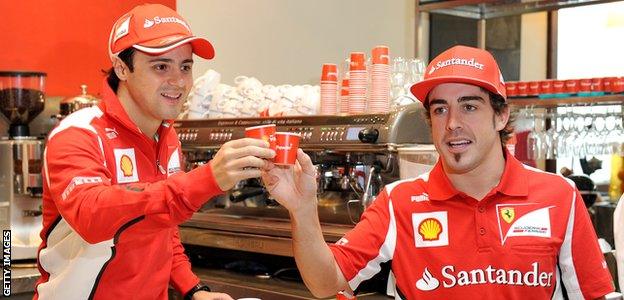
F1 coffee break: In 2012 then Ferrari duo Felipe Massa and Fernando Alonso served punters coffee in Albert Park
When it all starts to get going
Typically, most teams will have at least a day of media activities as the season begins.
In general, these are not things that drivers enjoy doing; they are contractual obligations to be got through.
However, in Melbourne the enthusiastic vibe of the fans and the buzz and excitement from the media is such that even these actually become a pleasure.
As the week goes on, the excitement builds and Thursday arrives, the first official working day of the 2018 season.
The drivers tend to get driven into the circuit by their trainers. I certainly used to prefer that over driving because it just makes life that little bit easier over the weekend.
In Melbourne, each day you get dropped off at the top of the 'Melbourne Walk'. It's effectively a red carpet, lined with fans desperate to get selfies and autographs of the drivers. There's also interviews on the way in for circuit TV.
The paddock - the area behind the pits where the teams are based for the weekend - is unique in Melbourne. There is an area of grass behind the garages, where the teams put out tables and chairs, and the team tents are across a path. It's a very sociable environment, quite different from some other races.
You walk into the paddock for the first time and see F1 2018 in its full glory. Friendly faces: mechanics, engineers, journalists, TV crews all smiling as they work.
Thursday is full of the usual media duties and track walks which take place at every circuit.
F1's halo 'is a step too far' - Palmer
At Renault, where I drove for the past three years, we also used to have a quiz among the senior directors, engineers and drivers on the rules. It's a very simple bit of fun but an important bit of teaching as well to make sure we are up to speed with everything that has changed over the winter.
Finally the sun sets on Thursday and Friday arrives. Time to hit the track, get a first feeling of how not only the weekend, but the season will go.
Melbourne was one of my favourite circuits. It's unforgiving - as I found out last year, sadly! But that makes the challenge that much more enjoyable and really focuses the mind.
The anticipation is finally over and a long season of highs and lows begins. It's a fantastic place for a season-opener.
Over the years, it's thrown up many thrills and spills - and the great thing about it is everyone arrives with a feeling that this could be the start of a successful year.
Australian Grand Prix on the BBC |
|---|
Dates: 23-25 March Circuit: Albert Park |
Coverage: Practice sessions online-only; Qualifying and race on BBC Radio 5 live. Live text commentary, leaderboard and imagery on BBC Sport website and app. |
- Published14 March 2018
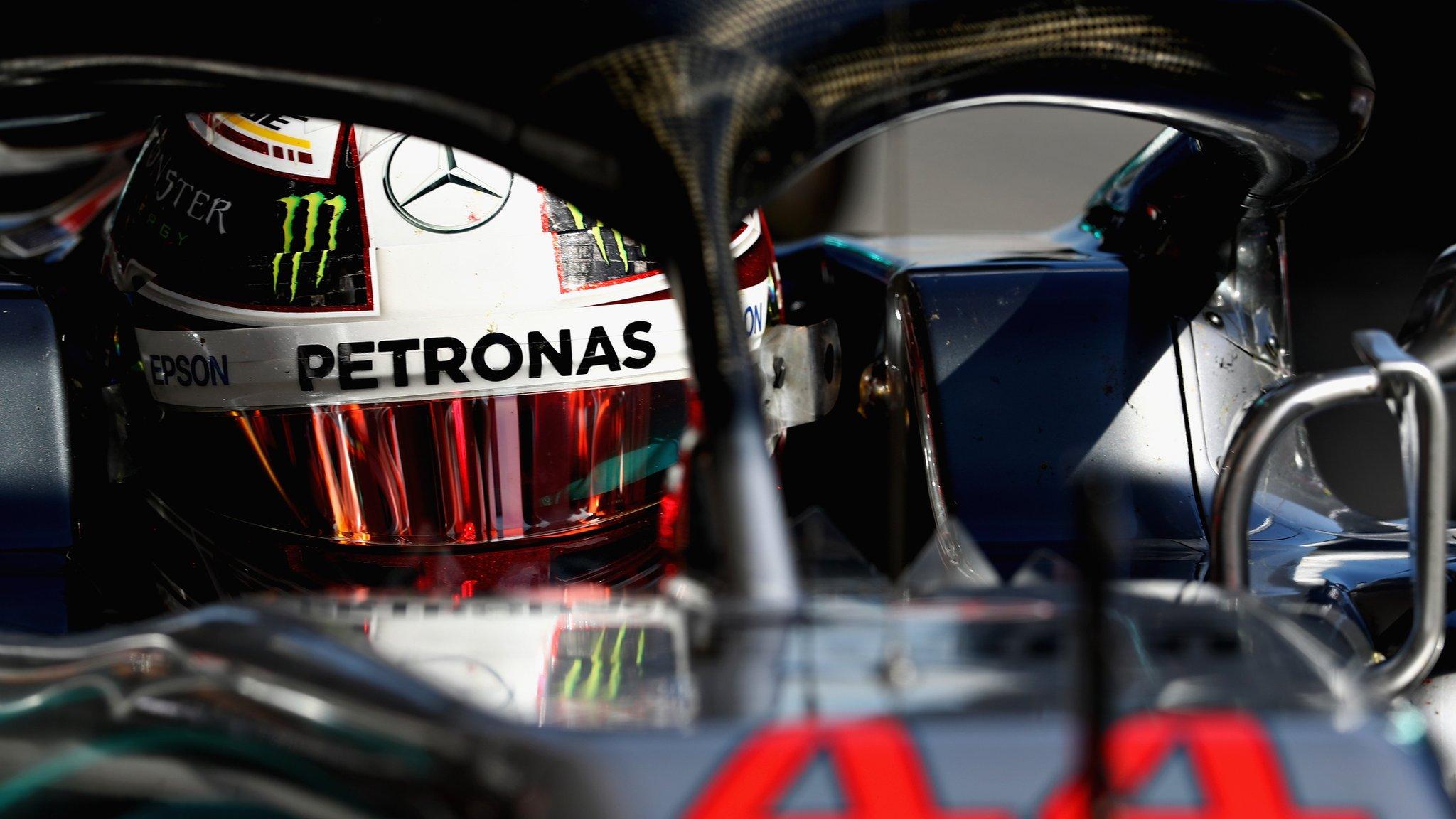
- Published16 March 2018
